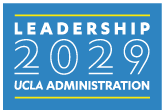Employee Retention Series: Part 3
Management Topic: The Critical Importance of Succession Planning
Dear Colleagues,
Over the past twenty years of my career, I have seen the same mistake time and time again in the private, nonprofit, and public sectors: the lack of a strategic plan addressing short- and long-term succession planning. Too often, managers place the plan on the backburner and focus all of their attention on the “here and now” due to time constraints, not understanding or knowing the organization’s direction for the future, or a lack of knowledge on how to create a strategy. However, by failing to invest the time now, we place our teams, the organization, and ourselves at risk for greater loss in time, productivity, effort, and budget in the future. It is imperative for any organization to have a strong understanding of its strategic vision, mission, values and direction, and plan accordingly in order to sustain its health and growth and foster excellence.
Commitment to the Succession Plan
First, is it critically important for leadership to understand the vision and reduction or growth potential for their department and work actively to plan to mitigate the factors that may be a detriment to the health of the department. Once leaders have the vision they need to bring to life or understand the new direction the organization must move toward, the head of the department and management must agree about the priorities of the organization and the strategic initiatives needed to reach the goals and objectives that will secure its success.
However, in my career experience, I have observed that this alone is not enough. It is important that all impacted employees, including those on the front lines, understand and believe they are part of the succession plan and know their own role within the plan, should they have one. If key employees know they are part of the strategy, they are far more likely to commit to the organization longer term and partner with their supervisor to ensure they are on a detailed path forward that outlines their professional growth.
In addition, the plan must be reviewed at least twice a year, if not more, in order to review progress, make course corrections, or pivot if needed. Moreover, leadership, along with management staff, must also be held accountable for meeting the milestones and goals of the plan. Too often, plans are developed yet quickly forgotten and stored away on a shelf because the focus goes back to the “here and now” and the scheduling of periodic reviews of the strategy simply do not take place. In other words, it must become an active and live action plan.
Why Develop a Plan Now?
If the global pandemic has taught us anything, it is not to leave until tomorrow what can and must be done today. We must have a business continuity plan and be ready to execute it at any time. Anything from a natural disaster to a pandemic to a critical employee leaving their position can leave a department at a loss for how to move forward and continue to serve our students, employees, and community. Developing and educating the workforce on the organization’s overall business continuity plan is absolutely critical, but that is a greater topic for another day (visit the UC Ready website for more information on this topic). Today, managers have the following issues to work through as they seek to plan for future personnel needs:
- Competition for talent: The workforce has shifted priorities and has left many with less will to compromise on all aspects from salary, relocation, flex-schedules, etc.
- Retention: Turnover rates have steadily increased for the reasons noted above as well as low morale and/or understanding of opportunities for professional growth available to them at their current institution.
- Baby boomer retirement: Over the next decade, these numbers are expected to increase dramatically as an additional 17.3% of PSS and 24.5% of SMG & MSP employees will be in the high retirement risk category. This will likely increase turnover, and high upcoming retirement risk increases the likelihood of both the loss of institutional knowledge and the cost of replacement to the organization (The Case Engaging in Talent and Succession Management Strategy at UC, page 3).
Know the Workforce
As managers seek to build an effective succession plan in order not only to sustain their program but also foster an environment of growth, we must know our workforce. Managers must understand what the current needs are, what they may be in the future, and what obstacles to success may come their way. They must conduct a thorough review of their current teams to assess current talent, key roles that they will need to fill in the near and distant future (up to 10 years as a point of reference), and plans of current employees for their own future, if possible. Organizations save valuable time in the succession planning process by onboarding exceptional employees and drawing from the existing employee base with the institutional knowledge, rather than recruiting externally for new positions when leadership roles become available.

Assess the Needs of the Workforce, Department and Programs
Moreover, an assessment should include a review of the following:
- Program needs, both current and in the future
- Critical knowledge/skills/abilities (KSAs) of employees
- Critical KSA gaps of employees
- Solutions for KSA gaps of employees, especially for those in key roles. (Solutions should include a career map and implementation of a plan that will provide key employees with adequate training, professional development and shadowing opportunities)
- Levels of morale of the overall employee base (which may affect turnover)
Managers must be willing to invest the time to get to know their employees, what motivates them, what drives them to do their best work, and what their strengths and knowledge/skill gaps are. It is important to identify talent early so that together you can build a professional development strategy. The most effective succession planning begins at the recruitment phase. UCLA offers programs that can assist leadership in identifying and developing talent from the PSS2 level via the Management Skills Assessment Program (MSAP) to the MSP level. As managers, it is our duty to prepare our respective departments for the future and leave our departments and teams stronger and more prepared than when we arrived. Furthermore, when employees know their supervisors are invested in their growth, it is my belief, growth in morale follows, and thus current productivity and outputs of the department follow as well – resulting in an immediate positive impact. Thus, there are current and long-term benefits of initiating a plan.
As a last note and recommendation, experience has demonstrated that managers must also know their programs from the ground up, as well as the systems in place that have sustained it. For example, far too many times, when employees leave, so does their institutional knowledge and expertise. Often, I have seen managers scramble because they do not know where materials (equipment, files, etc.) were stored. It is essential that employees are cross-trained in order to mitigate disruption to business continuity. Transition plans are also key to the success of any succession plan. Spend time with your departing employees, take notes, and understand their jobs, duties, as well as the above-and-beyond duties they undertook but perhaps you did not notice. Now is the time.
Whom to Contact if You Have Questions
For guidance on recommendations regarding available programs and training to develop your team member’s skills, as well as assistance with designing stretch assignments, contact CHR’s Learning & Organizational Development team or email learning@chr.ucla.edu.
Helpful Reminder from February's Article
After a professional development plan has been implemented:
- Set up short- and long-term goals.
- Assign milestones in order to track progress.
- Ensure your employee has dedicated time to work on establishing these new skills.
- Hold regular check-ins and solicit feedback.
For more information on coaching others, please visit the Coaching Resources page.
Resources and Programs for Staff
The university offers several leadership programs for emerging supervisors and managers:
- UCLA Supervisory Certificate Program
- Management Skills Assessment Program (MSAP)
- Management Development Certificate
- UCLA Strategic HR Program
- Chancellor's Executive Education Fellowship
- UCLA Women’s Leadership Institute
- UCLA Inclusive Leadership Institute
Helpful Websites and Articles to Learn More About This Topic
- Engaging in Succession Planning
- The Leaders Guide to Effective Succession Planning
- UC Ready (Business Continuity Planning)
- 2019 UC-Coro Northern California Cohort Project, Talent and Succession Management
- The Case for Engaging in Talent and Succession Management Strategy at UC
Interested in reviewing prior months’ topics? Visit our Monthly Management Tips website.
Stay Safe!

Do you have feedback, questions or a suggested topic you would like to learn more about? Please email: managementtips@ucla.edu.
Want to receive Monthly Management Tips emails? Sign up for our list!

